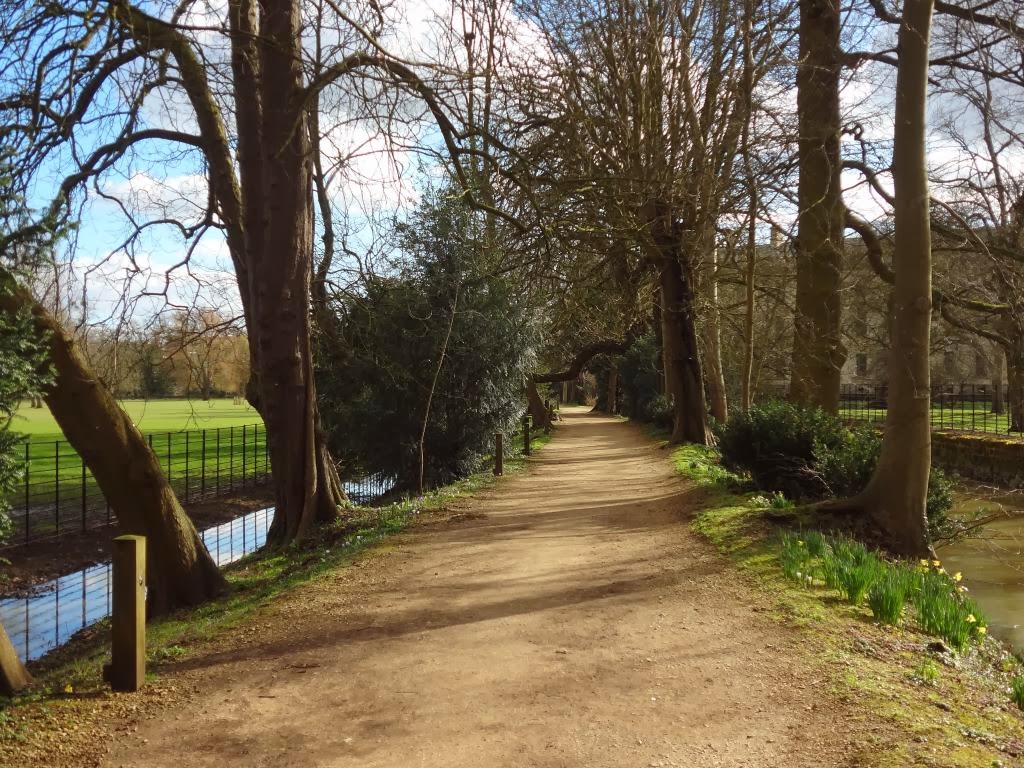
On an early Sunday morning, September 20, 1931, 32-year-old C.S. Lewis (Fellow and Tutor of English Literature at Magdalen College, Oxford), 39-year-old J.R.R. Tolkien (Rawlinson and Bosworth Professor of Anglo-Saxon at Oxford), and 35-year-old Hugo Dyson (Tutor and Lecturer at Reading University) took a walk together on Addison’s Walk in the grounds of Magdalen College at the University of Oxford. Their time together had begun the night before at dinner, but their conversation continued late into the night. After Tolkien left around 3 a.m., Lewis and Dyson continued talking until they retired at 4 a.m.
Two days later (Tuesday, September 22), Lewis recounted the scene to his longtime friend, Arthur Greeves:
We began on metaphor and myth—interrupted by a rush of wind which came so suddenly on the still, warm evening and sent so many leaves pattering down that we thought it was raining. We all held our breath, the other two appreciating the ecstasy of such a thing almost as you would. We continued (in my room) on Christianity: a good long satisfying talk in which I learned a lot: then discussed the difference between love and friendship—then finally drifted back to poetry and books.
Later in the letter, writing about the writings of William Morris, Lewis notes:
These hauntingly beautiful lands which somehow never satisfy,—this passion to escape from death plus the certainty that life owes all its charm to mortality—these push you on to the real thing because they fill you with desire and yet prove absolutely clearly that in Morris’s world that desire cannot be satisfied.
The [George] MacDonald conception of death—or, to speak more correctly, St Paul’s—is really the answer to Morris: but I don’t think I should have understood it without going through Morris. He is an unwilling witness to the truth. He shows you just how far you can go without knowing God, and that is far enough to force you . . . to go further.
The following month (October 18), Lewis wrote to Greeves again about their conversation:
Now what Dyson and Tolkien showed me was this: that if I met the idea of sacrifice in a Pagan story I didn’t mind it at all: again, that if I met the idea of a god sacrificing himself to himself . . . I liked it very much and was mysteriously moved by it: again, that the idea of the dying and reviving god (Balder, Adonis, Bacchus) similarly moved me provided I met it anywhere except in the Gospels. The reason was that in Pagan stories I was prepared to feel the myth as profound and suggestive of meanings beyond my grasp even tho’ I could not say in cold prose ‘what it meant’.
Now the story of Christ is simply a true myth: a myth working on us in the same way as the others, but with this tremendous difference that it really happened.
(You can find an imaginative reconstruction of their conversation here.)
Years later Lewis wrote a poem entitled “What the Bird Said Early in the Year,” which not coincidentally is set in Addison’s Walk, and has to do with a spell becoming undone. Let him who has ears to hear, hear.
I heard in Addison’s Walk a bird sing clear:
This year the summer will come true. This year. This year.Winds will not strip the blossom from the apple trees
This year, nor want of rain destroy the peas.This year time’s nature will no more defeat you,
Nor all the promised moments in their passing cheat you.This time they will not lead you round and back
To Autumn, one year older, by the well-worn track.This year, this year, as all these flowers foretell,
We shall escape the circle and undo the spell.Often deceived, yet open once again your heart,
Quick, quick, quick, quick!—the gates are drawn apart.



















